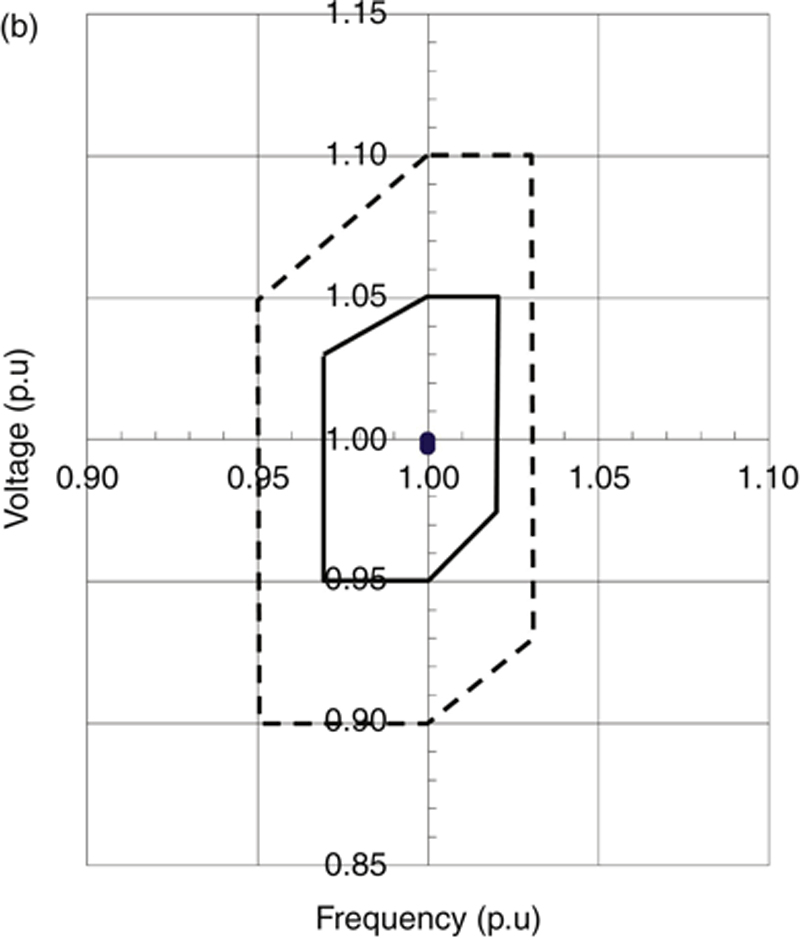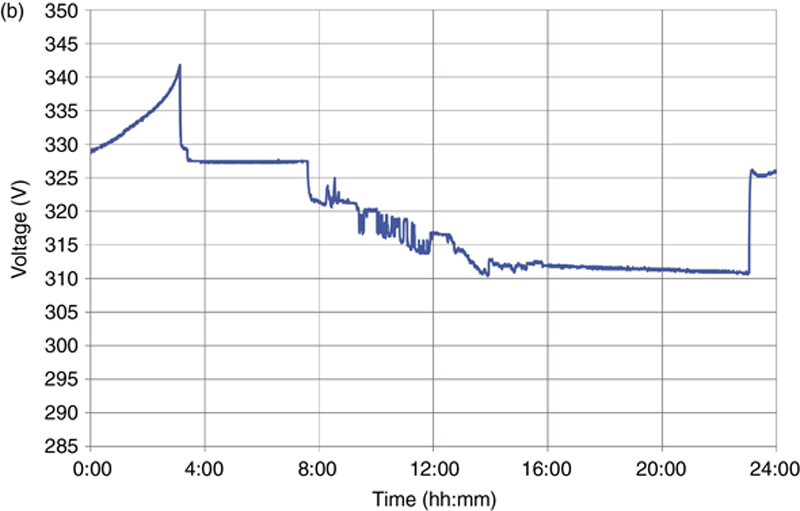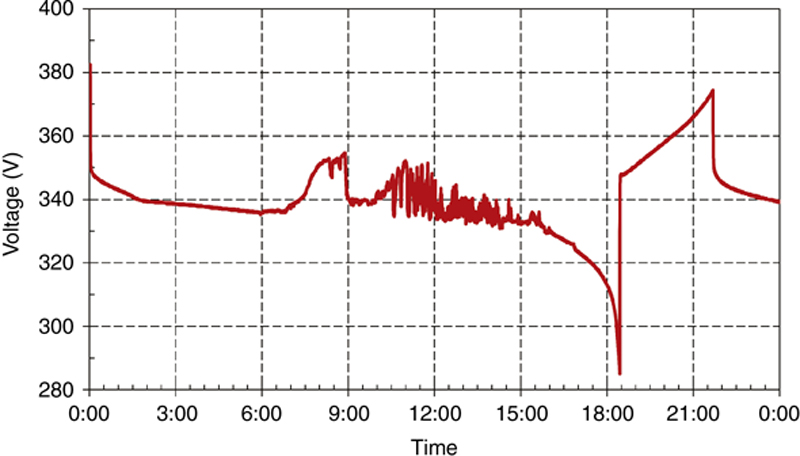AC/DC microgrids
Abstract
In recent years, the severity of worldwide environmental problems such as global warming and extreme weather events has intensified, while efforts to reduce adverse environmental impacts and to introduce alternative energy sources to replace fossil fuels have been actively promoted. In the field of electrical energy, distributed power sources that utilize natural and renewable energy sources, such as photovoltaic and wind power generation, as well as biomass power generation and fuel cell technology, continue to be active areas of research and development.
Keywords
10.1. Basic concept of AC microgrids [1]


Table 10.1
System Operation Mode
| Mode | ACSW | Bidirectional Converter Operation | AC Voltage/Frequency | DGs | Harmonics |
| Islanding | OFF | Asynchronous operation
• Asynchronous AC output with utility grid
|
Constant | Maximum power point tracking (MPPT) | Repression of voltage distortion in AC-grid |
Synchronous operation
• Synchronous AC output with utility grid
|
N/A | ||||
| Connected | ON |
• Active filter for harmonics current
• Battery charging
|
Depends on utility grid | Repression of harmonic current as AC input | |
| Back up | OFF |
• Asynchronous AC output with utility grid
|
Constant | Repression of voltage distortion in AC grid |

10.1.1. Islanding mode
10.1.1.1. Asynchronous operation
10.1.1.2. Synchronous operation
10.1.2. Connected mode
10.1.3. Backup mode
10.1.4. Experiment field and device specification

10.1.5. System operation


(a) Building 12; (b) library.

10.1.6. Measurement of power quality
10.1.6.1. Voltage and frequency


(a) Synchronous; (b) asynchronous. Samples: 14,400 points (for 12 h period in 2008).
10.1.6.1.1. Voltage harmonics

10.1.6.1.2. Current harmonics

10.2. Battery charge pattern and cost [2]


(a) Utility power in a day; (b) power flow and load curve in a day.
Table 10.2
Average Battery Charge Times
| Operated Days | Charged Times | Average Per Day |
| 169 (days) | 269 (times) | 1.59 times/days |
10.2.1. Battery charge method
10.2.2. Test results
10.2.2.1. Charge pattern



(a) CC charge value 25 A, CV charge time 2 h; (b) CC charge value 18 A, CV charge time 2 h; (c) CC charge value 25 A, CV charge time 8 h.
Table 10.3
Device Specifications
| Devices | Quantity | Capacity | Remarks |
| Photovoltaic (PV) panels | 2 | 10 kW | |
| PV inverter | 2 | 10 kW | |
| PV converter | 2 | 10 kW | |
| Bi-directional converter | 2 | 50 kW | |
| VRLA batteries | 2 | 2V 200Ah 2V 100Ah |
168 (cells/set) |

10.2.2.2. Test result


(a) The case of reducing CC value; (b) the case of extending CV terms.
Table 10.4
Charge Pattern
| CC Charge Value (A) | CV Charge Value (h) | Peak Power (kW) | Electric Energy (kWh) | |
| 1 | 25 | 2 | 8.9 | 38.52 |
| 2 | 18 | 2 | 6.27 | 34.07 |
| 3 | 25 | 8 | 9.22 | 31.74 |

10.2.2.3. Effect on electric rate

10.3. Supply and demand control of microgrids [3,4]
10.3.1. Peak cut/peak shift mode operation

(a) Day load curve of the peak cut/peak shift operation; (b) electric rate.


(a) Daily load curve; (b) DC voltage curve.
10.3.2. Receiving constant power mode operation


10.4. Basic concept of DC microgrids

Table 10.5
Calculation Result of the Energy Saving Effect by the Direct Current Electricity Supply [5]
| Equipment | Number of Units | Consumed Power of One (Wh/year) | Consumed Power (Wh/year) | Amount of Efficient Improvement by the Power Supply Side in DC/AC Reduction (%) | Efficiency Ratio of a Household (%) |
| Air conditioning (2.2 kW) | 3 | 700 | 2100 | 3.0 | 2.66 |
| Refrigerator (500 L) | 1 | 300 | 300 | 3.0 | 0.24 |
| Hot water supply | 1 | 600 | 600 | 3.0 | 0.47 |
| Induction Heating Cooking Heater | 1 | 600 | 600 | 3.0 | 0.57 |
| Microwave | 1 | 70 | 70 | ||
| Rice cooker | 1 | 100 | 100 | ||
| LED illumination | 5 | 120 | 480 | 3.0 | 0.76 |
| Liquid crystal television (40 in.) | 2 | 150 | 300 | ||
| Recorder | 1 | 80 | 80 | ||
| Other | 1696 | ||||
| Total | 6326 | 4.70 |



10.4.1. System operation of DC microgrid [7]



10.5. Examples of microgrids in the world
Table 10.6
Some Examples of Microgrid Deployments in Different Parts of the World [8]
| Location | Microgrid |
| North America | Fort Zed, Fort Collins. Colorado; University of San Diego. California; Santa Rita jail, Santa Rita. California; Perfect Power. Chicago, Illinois; BCiT microgrid, Vancouver, BC, Canada; Balls Gap Station, Milton, West Virginia |
| South America | Robinson Crusoe Island, Chile; OHagUe’s microgrid, Chile; Huatacondo’s microgrid. Chile |
| Europe | Model City of Manheim, Germany; Cell Controller Project, Denmark; CRES-Gaidouromanlra, Kythnos, Greece; Liandcr’s Holiday Park at Bronsbcrgen, Zuiphcn, The Netherlands; RSE-DER test facility. Italy; TECNALIA-DRR test facility. Bilbao, Spain; PIME’S project. Dale. Norway; Szentendre, Hungary; Salburua. Spain; La Graciosa Island microgrid, Spain; Optimagrid, Spain; iSare project, Guipiizcoa, Spain |
| Asia | Rural PV hybrid microgrid. West Bank; Hangzhou Dianzi University, China; NbDO microgrid. Aichi, Kyotang, Elaciiinohc. Japan; NEDO Tohoku Fukushi University, Sendai. Japan; Shimi/u Corp. microgrid. Tokyo Gas microgrid, Aiclii Institute of Technology microgrid, Japan; INER microgrid, Taiwan |
| Africa | Diakha Madina, Senegal |
| Australia | CSIRO. Kings Canyon, Coral Bay, Brcmer Bay, Denhem, Esperence, Hopctoun, King Island, Roltnest Island |
Note: Information from the US Department of Energy Renewable and Distributed Systems Integration projects and C1GRE WGC6.ll.
